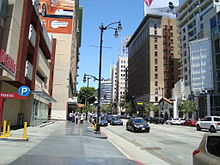루트풀라 타브리지
Lutfullah Tabrizi루트풀라 타브리지 무르시드 쿨리 칸 바하두르, 루스탐 장 | |
|---|---|
| 자한기르나가르의 나이브 나짐 (다카) | |
| 재직중 1728–1733 | |
| 모나크 | 나시루딘 무함마드 샤 |
| 선행 | 이티삼 칸의 아들 |
| 에 의해 성공자 | 사르파라즈 칸 |
| 나이브 나짐 | |
| 재직중 1734–1741 | |
| 선행 | 타치칸 |
| 에 의해 성공자 | 사이드 아흐마드 칸 |
| 개인 정보 | |
| 태어난 | 수랏, 구자라트, 무굴 제국 |
| 죽은 | 데칸 |
| 배우자 | 두르다나베검사히바점 |
| 아이들. | 미르자 무함마드 야히야 칸 바하두르 (아들) 두 딸 |
| 부모 |
|
| 친척들. | 사르파라즈 칸(처남), 슈자우딘 무함마드 칸(장인), 미르자 아가 바케르(사위) |
Mīrzā Lutfullāh Khān Tabrīzī (Persian: ميرزا لطف الله تبریزی, Bengali: মীর্জা লুৎফুল্লাহ তবরীজী), also known as Murshid Qulī Khān II, was an 18th-century administrator who served under the Nawabs of Bengal as the Naib Nazim of Jahangirnagar (Dhaka) and Orissa respectively.루트풀라는 또한 [1]서예가였고, 사르샤르라는 필명으로 페르시아어를 [2]쓴 작가였다.
아자드 알-후사이니의 나우바하-이-무르시드-쿨리-카니 책은 루트풀라에게 바쳐져 그를 하부 티페라의 정복자로 [3]칭송한다.이는 티페라가 명목상으로만 무굴 통치하에 있었고 루트풀라의 나이브 [4][5]나짐 재임 기간 동안 완전히 합병되었기 때문이다.
초기 생활과 가족
미르자 루트풀라는 1684년 인도 구자라트의 수랏에서 태어났다.그의 아버지 하지 슈크룰라는 수랏으로 이주한 사파비드 도시 타브리즈 출신의 시아파 페르시아인이었다.루트풀라는 수랏으로 이주한 또 다른 페르시아 이민자이자 사파비드 학자 아그하 호세인 칸사리의 [6][page needed]선배 학생인 아카 하비불라 이스파하니 밑에서 공부했다.
그의 아버지가 죽은 후, 루트풀라는 상인으로서 수랏을 떠나 벵갈로 향했고, 그곳에서 그는 무르시다바드의 벵갈의 나왓 궁정에서 인기를 얻었다.슈자우딘 무함마드 칸은 그의 딸 두르다나 베굼 사이바를 루트풀라에게 시집보냈다.이 부부는 아들 미르자 무함마드 야히야 칸 바하두르와 딸 두 명을 두었다.메흐만 베굼으로도 알려진 방갈리 베굼 사히바는 그들의 장녀였고, 막내 딸은 알라 우드딘 무함마드 [6]칸의 아내였다.
Career
In 1728, Lutfullah was appointed by his father-in-law Nawab Shuja-ud-Din Muhammad Khan as the regional governor at Jahangirnagar.[7] Along with this appointment, Lutfullah was given the title of Murshid Quli Khan II.[8] During his tenure, Murshid Quli Khan II had shops constructed in Chowk Bazaar.[9][3] As the Nizamat of Jahangirnagar covered all of eastern Bengal, Lutfullah's responsibility also spread outside of Dhaka. He is credited for the complete Mughal annexation of Lower Tippera, which was formally only nominally under Mughal rule.[4]
In 1734, Lutfullah was transferred to govern the Nizamat of Orissa.[citation needed] The Battle of Giria near Murshidabad on 10 April 1740 meant the ascension of Alivardi Khan as the new Nawab of Bengal.[10] Lutfullah rejected the authority of Alivardi. Along with his son-in-law Mirza Agha Baqer, Lutfullah proceeded from Cuttack in Orissa towards Balasore and towards December 1740, established a camp at Phulwari Sharif in Bihar. Lutfullah was severely wounded in battle and was defeated on 3 March 1741, later fleeing to Machilipatnam in South India with Baqer. Alivardi later appointed Syed Ahmad Khan as the Naib Nazim of Orissa.[11][failed verification]
In the Deccan, Lutfullah served the Nizam of Hyderabad and spent the rest of his life. In the literary sphere, his magnum opus is Makhmur.[citation needed]
See also
References
- ^ The History of Bengal. Vol. 2. p. 426.
- ^ Khayyāmṕūr, ʻA (1990). فرهن سخنوران (in Persian). Vol. 1. انتشارات طلايه. p. 447.
- ^ a b Abdul Karim. Dacca, the Mughal Capital.
- ^ a b E M Lewis (1868). "Dacca District". Principal Heads of the History and Statistics of the Dacca Division. Calcutta: Calcutta Central Press Company. p. 36.
- ^ Abdul Karim (1992). History of Bengal: The reigns of Shah Jahan and Aurangzib. Institute of Bangladesh Studies. pp. 232, 269. OCLC 312807950.
- ^ a b Kia, Mana (19 May 2020). "The Work of Lineages: Memories of Place and Origin Before Nationalism". Persianate Selves. Stanford University Press. ISBN 978-1-5036-1068-2.
- ^ KM Karim (2012). "Naib Nazim". In Islam, Sirajul; Miah, Sajahan; Khanam, Mahfuza; Ahmed, Sabbir (eds.). Banglapedia: the National Encyclopedia of Bangladesh (Online ed.). Dhaka, Bangladesh: Banglapedia Trust, Asiatic Society of Bangladesh. ISBN 984-32-0576-6. OCLC 52727562. Retrieved 21 June 2022.
- ^ Tull Walsh, John Henry (1902). "Biographies". A history of Murshidabad District (Bengal): with biographies of some of its noted families. Jarrold. p. 135.
- ^ Abdul Karim (1962). "An Account of Dacca, dated 1800". Journal of the Asiatic Society of Pakistan. 7 (2): 300–301.
- ^ Nitish K. Sengupta (2011). Land of Two Rivers: A History of Bengal from the Mahabharata to Mujib. Penguin Books India. p. 157. ISBN 978-0-14-341678-4.
- ^ Khan, Muazzam Hussain (2012). "Aga Muhammad Bakar, Mirza". In Islam, Sirajul; Miah, Sajahan; Khanam, Mahfuza; Ahmed, Sabbir (eds.). Banglapedia: the National Encyclopedia of Bangladesh (Online ed.). Dhaka, Bangladesh: Banglapedia Trust, Asiatic Society of Bangladesh. ISBN 984-32-0576-6. OCLC 52727562. Retrieved 21 June 2022.


